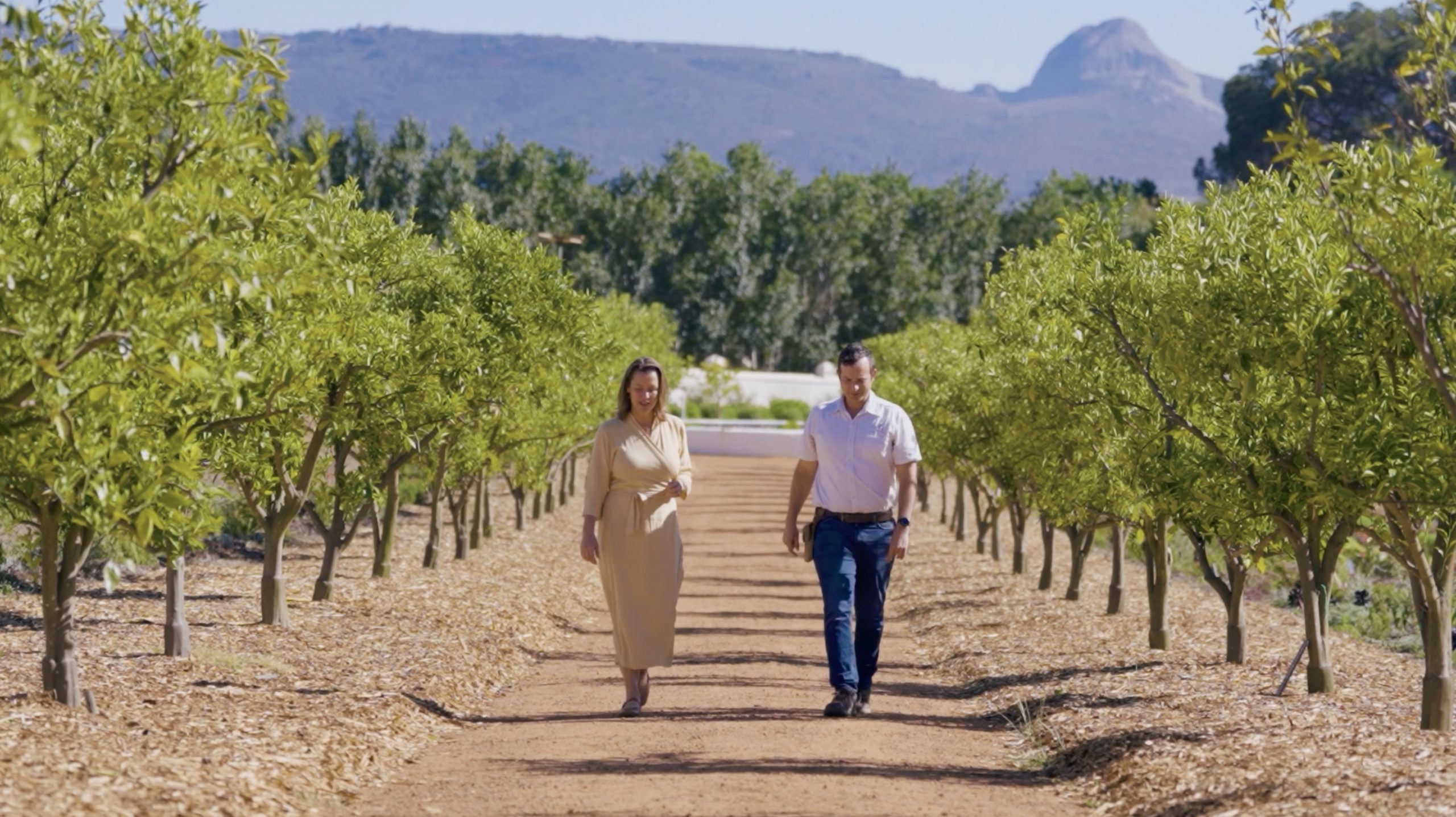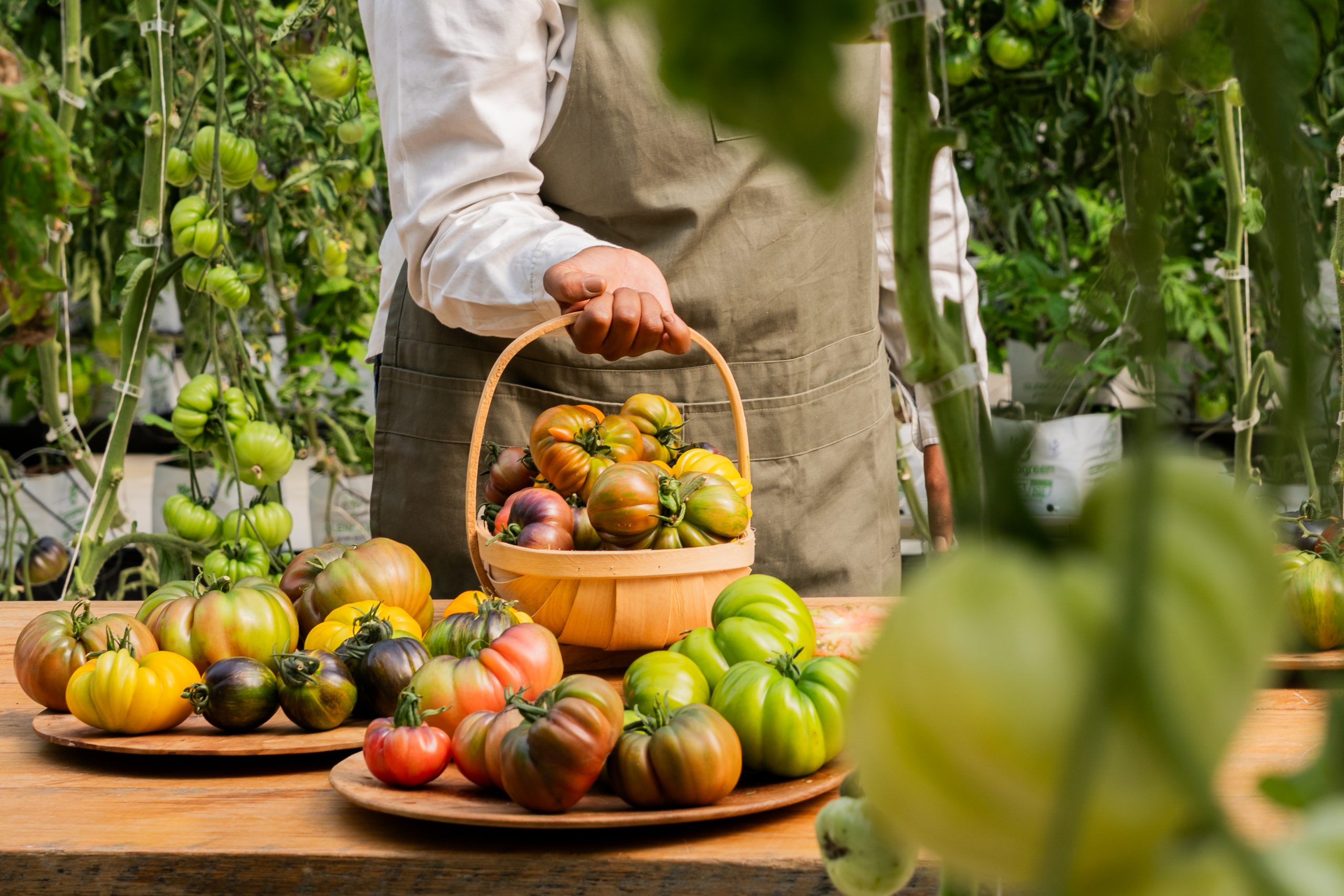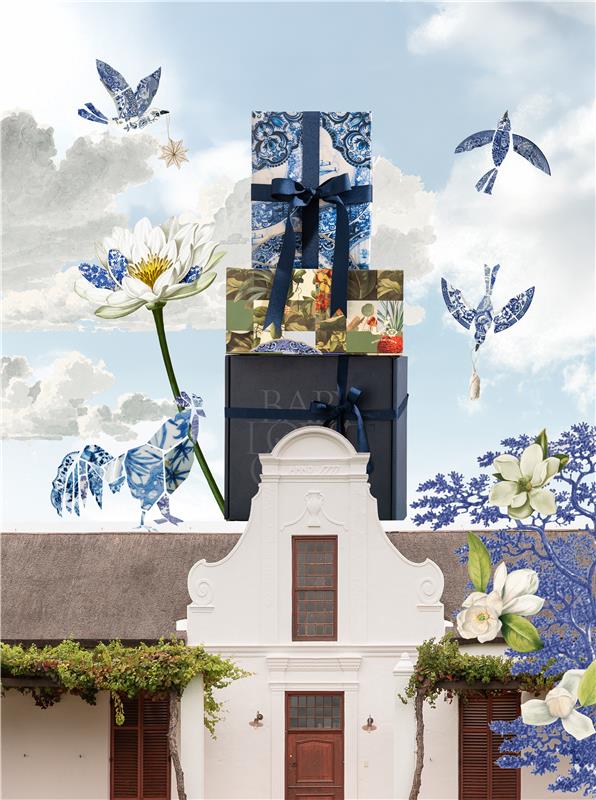Buzzing News Vol. 6
February 12th, 2025A week in the life of Babylonstoren’s VIP garden workers, by our resident beekeeper and entomologist, Arné Stander.
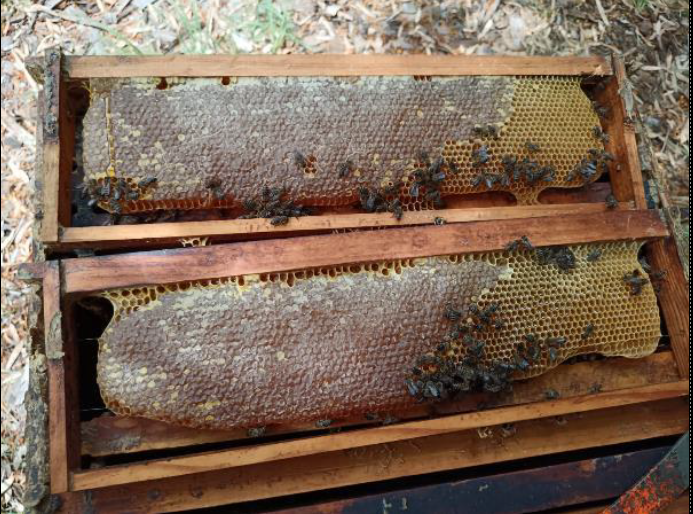
Overview
In the past month we’ve had a few scorchers that almost reached 40°C but other than that the weather has been bearable. We’ve also had cooler days in the mix, with a bit of rain last week.
The first workshop of 2025 was a bee workshop, which was extremely exciting, though the weather station forecasted a maximum temperature of 38°C on the day. At 10h00 we already measured 30°C, so I decided to switch the two sessions. It gets extremely hot in the bee suit and as our guests have never experienced it before, we decided to go straight to the hives shortly after 10h00.

We gathered in the shade at the apiary while I explained how to use a smoker and hive tool. We ensured all suits were properly closed before starting the smoker. The first hive was opened to look at the brood in the chamber. We saw capped brood and various developing stages of immature larvae. The brood was surrounded by pollen and honey in beautiful colours.
We managed to inspect a few broods despite the heat. After lunch at the Greenhouse Restaurant, we visited the bees in the garden. We spotted many carpenter bees in the lavender patch in front of Babel. The most abundant species was Xylocopa caffra.
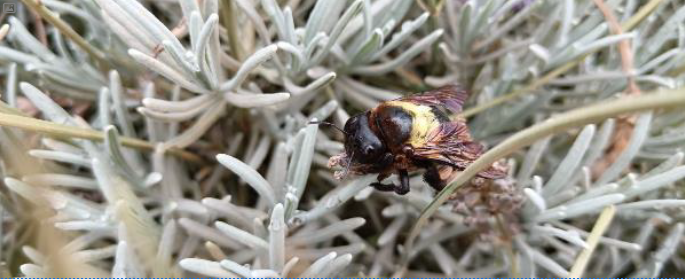
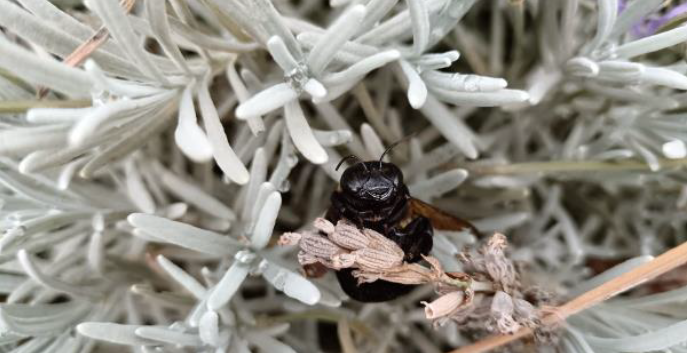
Guests went home with a peach-coloured roosvygie (Lampranthus roseus) and a packet of Phacelia tanacetifolia seeds from the Moestuin.
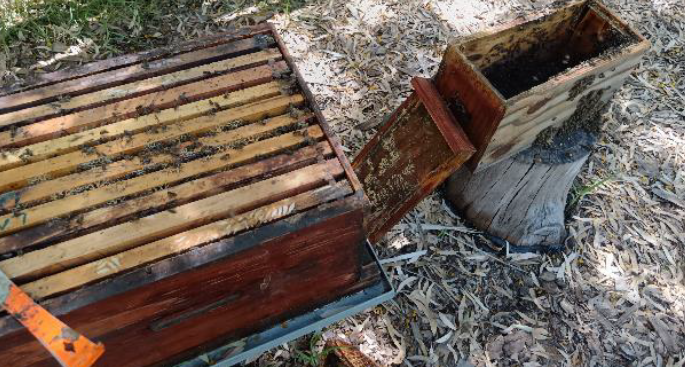
Over a month ago I transferred the swarm from the nuc hive to a standard 10-frame hive.
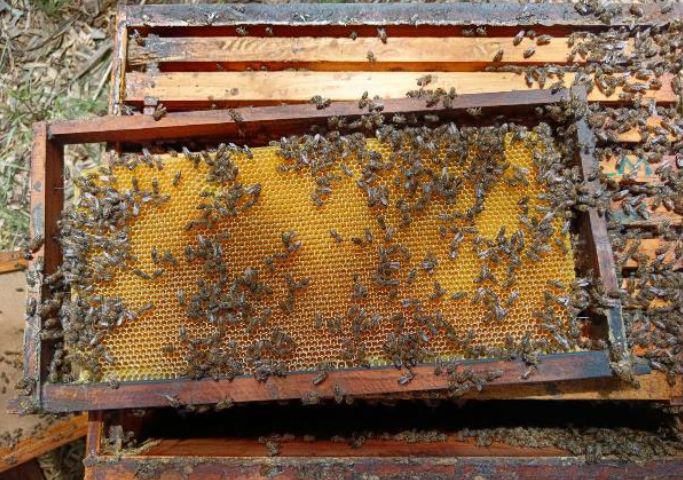
The swarm made very good progress as they built comb over six new frames. I inspected the outside frames, where the new comb is clearly visible. I gave them a super and will monitor their progress over the next month.
I also monitored the progress in the double-super hives. There are newly built frames and foundation sheets that require more building, but progress is already clearly visible.
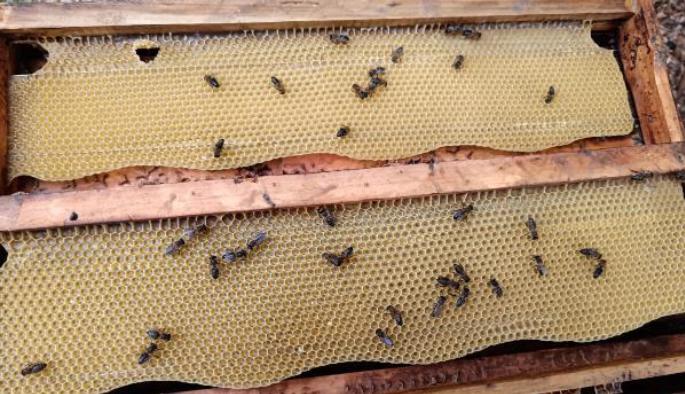
The original super on top shows beautiful, capped honey. However, the frames are not fully capped yet and should be ready for harvest in a few weeks.
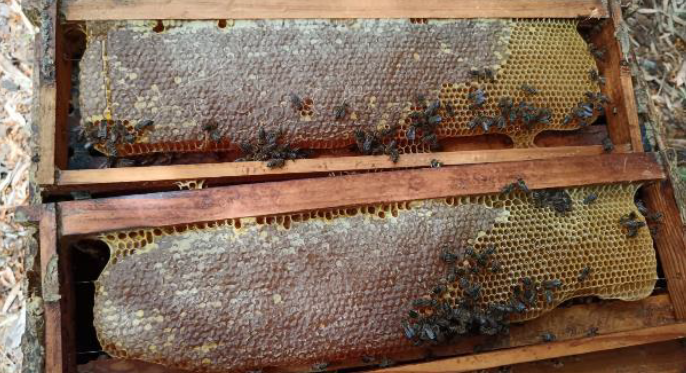
It was time to add supers to the hives at Soetmelksvlei.
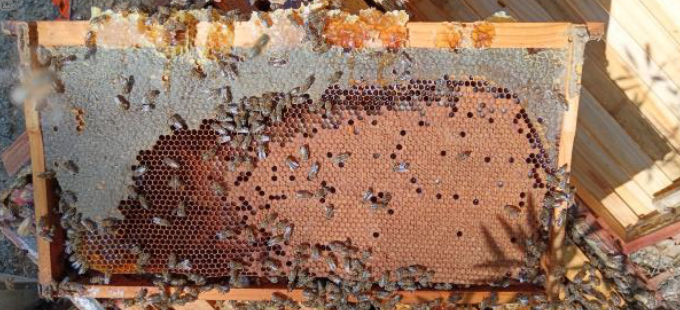
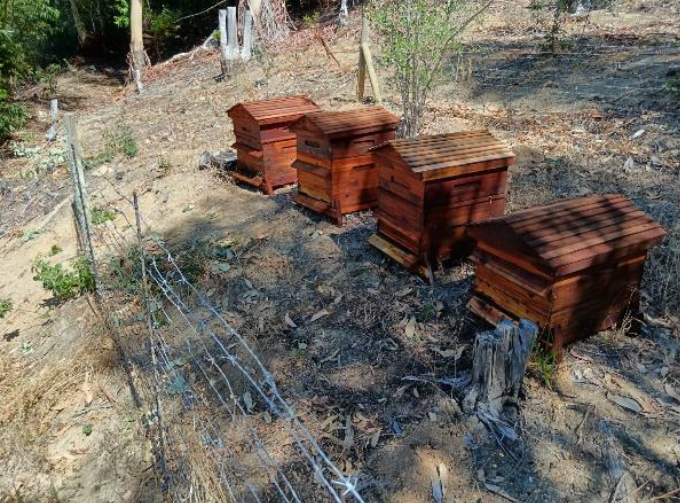
I checked the brood chambers of each hive first to assess the amount of brood. The beautiful brood patterns showed that the queens were doing fine. Only one hive did not receive a super as the progress in the brood chamber was limited to 6 out of the 10 frames. This swarm was smaller from the start. Despite not having a super yet, I am confident the swarm will build on the remaining frames before the end of the season. I will continue to monitor their progress.
In January I caught another moving swarm in the wild olive tree below the Fynbos dam. This site has been successful for years. It is possible to catch moving swarm up to March, although earlier in the season is preferable as it gives them more time to build their resources before winter.
Below is an image of a worker bee entering the hive with bright orange pollen. This indicates that the swarm has been successfully caught. Pollen going into the hive is a sign that the queen is laying eggs. The pollen is needed for bee bread, which is used to feed larvae.
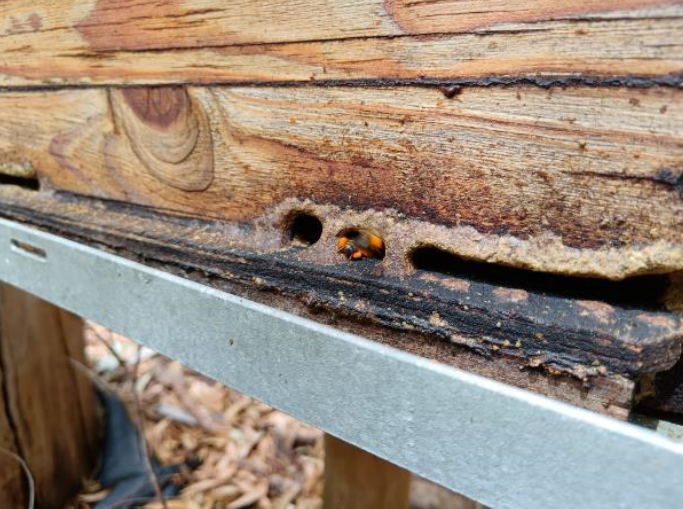
BUZZ WORDS
Super - Any hive body, usually a smaller box, used for the storage of honey which the beekeeper intends to harvest. Normally it is placed above the brood chamber(s). Supers are typically medium or shallow-sized boxes.
Apiary - Colonies, hives, and other equipment assembled in one location for beekeeping operations.
Beehive - An artificial cavity for a bee colony to live in, usually a box or boxes with movable frames.
Brood - Immature bees that are still inside their cells. Brood can be in the form of eggs, larvae, or pupae of different ages.
Capped honey – When bees cover their honey with wax, much like putting a lid on it.
Nuc – A nuc, or nucleus colony, is a small honeybee colony created from larger colonies, packages, or captured swarms.
Bee bread – Also known as bee pollen or ambrosia, is a ball or pellet of field-gathered flower pollen packed by worker honeybees and used as the primary food source for the hive. It consists of simple sugars, protein, minerals and vitamins, fatty acids, and a small percentage of other components.
Queen - A female bee with a fully developed reproductive system. Larger and longer than a worker bee.
